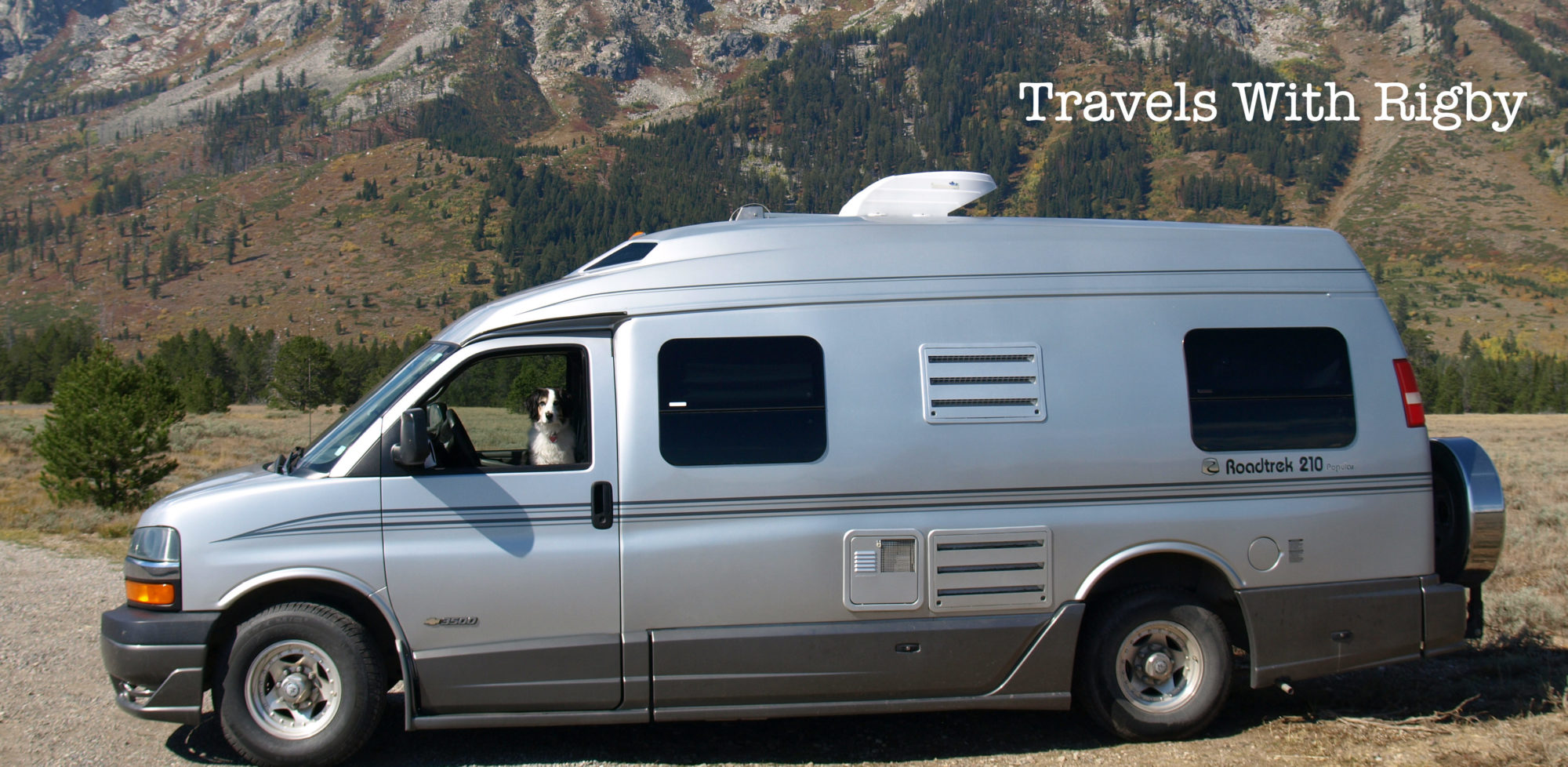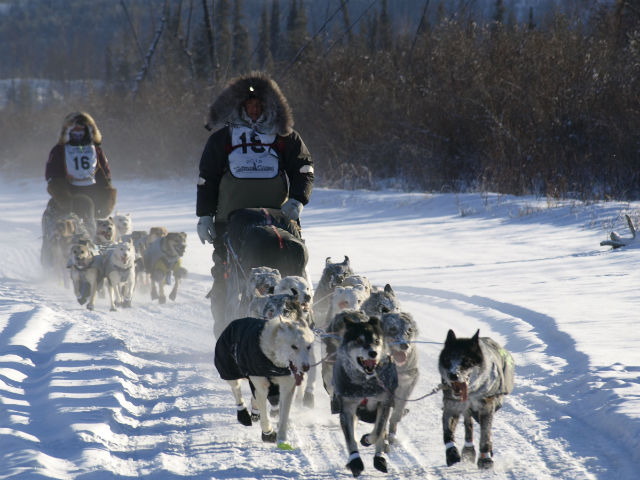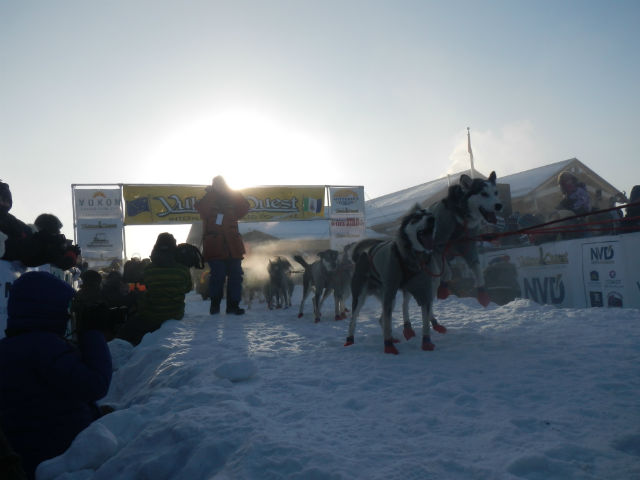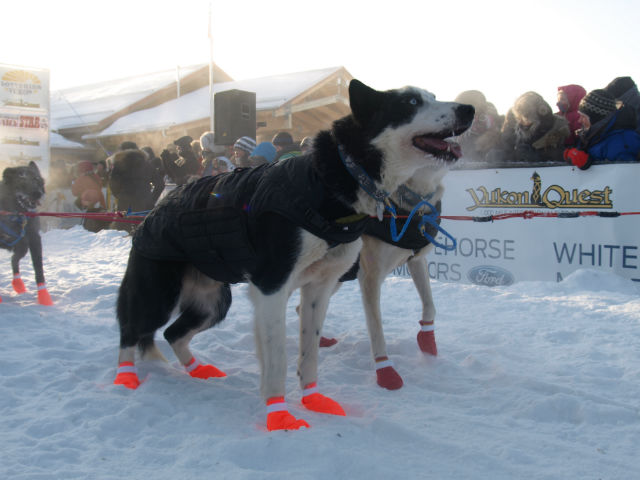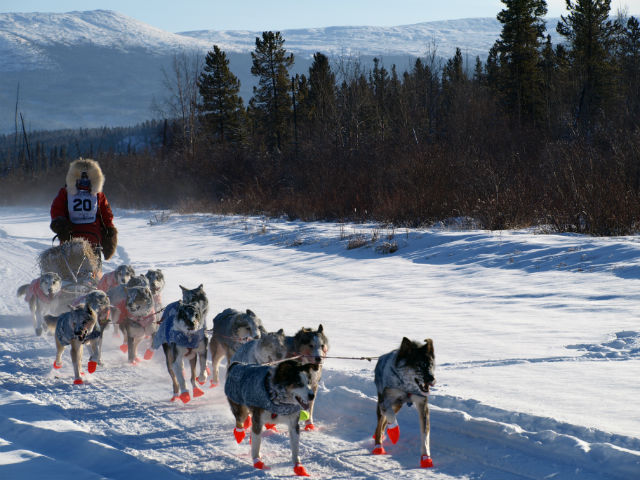The hoopla is over for 2015. The final team has crossed the finish line. Tons of dog food were consumed and the calories torched (one estimate is that the average sled dog burns 6,000-12,000 calories per day). The tents that sheltered teams of handlers and support crews have been dismantled and packed away. The thought of camping in minus 30C weather is something not for the faint of heart.
Being an observer at the 2015 Yukon Quest – the toughest sled dog race in the world – was an awe-inspiring event. The 1,600 km (1,000 mi) route connecting Whitehorse in Canada’s Yukon to Fairbanks, Alaska, traces the historic wintertime land route followed more than a century ago by prospectors and mail carriers. The race was named the Yukon Quest, to commemorate the “highway of the north” – the Yukon River – the traditional route to the gold fields of the Klondike. Anyone looking for a 20-minute schooling in the fascinating history of the Klondike Gold Rush will find it in the mesmerizing National Film Board film, City of Gold, narrated by Dawson City native, the late Pierre Berton.
The Yukon Quest sled dog race is one of those iconic celebrations of the north. Sled dogs provided a rock-steady, reliable form of transportation and this race celebrates that legacy. The people of the Yukon and Alaska know winter; but more importantly they know how to embrace winter. They bundle up with layers and get outside – dogsledding, cross-country skiing, snowshoeing and snowmobiling. Joining in is the only way to go.
I found myself in the Yukon in February. At first it seemed like an insane idea but in short time I was drawn into the Yukoners’ joyful embrace of the long, chilly season. And following the Yukon Quest was a large part of the fun. It’s a must-do for anyone who wants a true Canadian winter experience.
Looking for a primer to the Yukon Quest race? Look no further:
- The Yukon Quest has been run every February since 1984 and attracts teams from around the world.
- The race takes about 9-12 days to complete, depending on weather, trail conditions and team speed.
- Few sports call upon such a challenging requirement of endurance and isolation.
- The mushers must successfully complete qualifying races within the previous 42 months to enter the Yukon Quest.
- The race route runs between Whitehorse and Fairbanks, with the race direction alternating from one year to the next. In 2016, the race will begin in Fairbanks and end in Whitehorse.
- The teams leave the starting chute at two-minute staggered starts. At the start line, those puppies are chomping at the bit to get running!
- Dawson City, YK is the halfway point and teams must take a mandatory 24-hour break. The dogs eat and sleep. The mushers eat and sleep.
- The teams begin with 14 dogs. If a dog is withdrawn from the team there are no substitutions allowed. It is rare for a full 14-dog team to complete the entire race.
- The dogs are monitored at checkpoints by a team of veterinarians who come from around the world to be a part of the race.
- Every musher I saw was first and foremost attentive to the safety and health of his/her team. The connection between musher and dogs is endearing.
- There are many opportunities to watch the action: at the starting gates, along the route on frozen lakes, at checkpoints and in Dawson City at the mandatory layover.
- Unplanned circumstances can play havoc with the race. In 2015 it was a slew of misadventures from jumble ice on the frozen river to a female dog going into heat during the course of the race. The mushers are experts at problem solving on the fly.
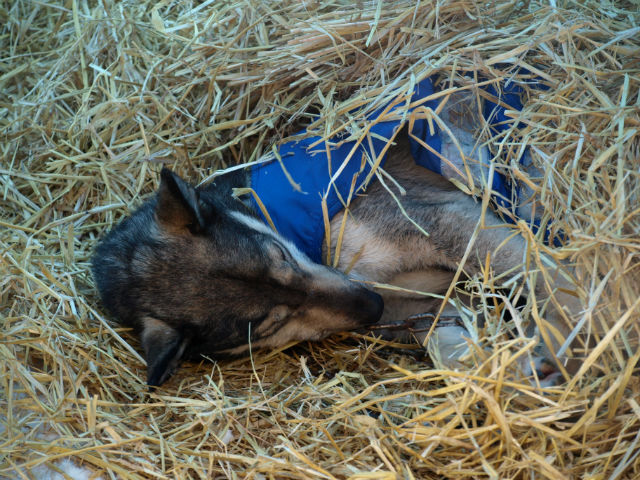
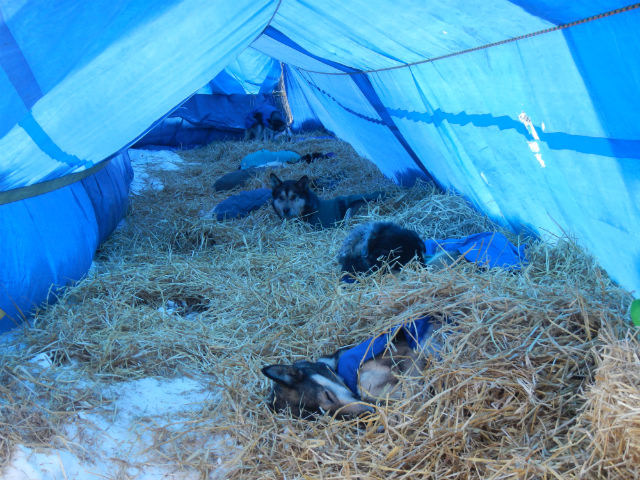
There are also many outfitters who provide novice mushers (that would be visitors like you and me) with their own sled dog experience. I mushed with Sky High Wilderness Ranch and it was a great experience. A complete list can be found at Travel Yukon.
